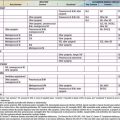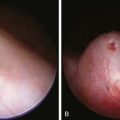Chapter 555 Physiology of Puberty
The age of onset of puberty varies and is more closely correlated with osseous maturation than with chronological age (Chapter 12). In girls, the breast bud (thelarche) is usually the first sign of puberty (10-11 yr), followed by the appearance of pubic hair (pubarche) 6-12 mo later. The interval to the onset of menstrual activity (menarche) is usually 2-2.5 yr but may be as long as 6 yr. In the United States, at least 1 sign of puberty is present in approximately 95% of girls by 12 yr of age and in 99% of girls by 13 yr of age. Peak height velocity occurs early (at breast stage II-III, typically between 11 and 12 yr of age) in girls and always precedes menarche. The mean age of menarche is about 12.75 yr. There are, however, wide variations in the sequence of changes involving growth spurt, breast bud, pubic hair, and maturation of the internal and external genitalia.
In boys, growth of the testes (≥4 mL in volume or 2.5 cm in longest diameter) and thinning of the scrotum are the first signs of puberty (11-12 yr). These are followed by pigmentation of the scrotum and growth of the penis (Chapter 12) and by pubarche. Appearance of axillary hair usually occurs in mid-puberty. In boys, unlike in girls, acceleration of growth begins after puberty is well under way and is maximal at genital stage IV-V (typically between 13 and 14 yr of age). In boys, the growth spurt occurs approximately 2 yr later than in girls, and growth can continue beyond 18 yr of age.
Genetic and environmental factors affect the onset of puberty. Despite the debate raised by population-based studies in the USA suggesting a secular trend for slightly earlier (by 2.5 to 4 months) ages at menarche, the latter has generally been considered stable over the last 30-40 yr. This period of relative stability follows a significant decrease over the previous century, a result of major changes in nutritional and health conditions. African American girls may be more advanced in development of secondary sex characteristics for age than Caucasian girls. A positive correlation between the degree of adiposity and early pubertal development in girls has been reported. Conversely, ballet dancers, gymnasts, and other female athletes in whom leanness and strenuous physical activity have coexisted from early childhood often exhibit a marked delay in puberty or menarche, and they often have oligomenorrhea or amenorrhea as adults (Chapter 682). Pubertal delay is also prevalent in boys who are physically very active. These observations support the thesis that the energy balance is closely related to the activity of the GnRH pulse generator and the mechanisms initiating and sustaining puberty, perhaps via hormonal signals, which can include adipokines.
Euling SY, Herman-Giddens ME, Lee PE, et al. Examination of US puberty timing data from 1940 to 1994 for secular trends: panel findings. Pediatrics. 2008;121:s172-s191.
Kaplowitz PB, Slora EJ, Wasserman RC, et al. Earlier onset of puberty in girls: relation to increased body mass and race. Pediatrics. 2001;108:347-353.
Nebesio TD, Eugster EA. Current concepts in normal and abnormal puberty. Curr Prob Pediatr Adolesc Health Care. 2007;37:45-80.
Ojeda SR, Lomniczi A, Mastronardi C, et al. Minireview: the neuroendocrine regulation of puberty: is the time ripe for a system biology approach? Endocrinology. 2006;147:1166-1174.
Parent A, Teilmann G, Juul A, et al. The timing of puberty and the age limits of sexual precocity: variations around the world, secular trends, and changes after migration. Endocr Rev. 2003;24:668-693.
Ritzen EM. Early puberty: what is normal and when is treatment indicated? Horm Res. 2003;60:31-34.
Seminara SB, Messager S, Chatzidaki EE, et al. The GPR54 gene as a regulator of puberty. N Engl J Med. 2003;349:1614-1626.
Teilmann G, Pedersen CB, Jensen TK, et al. Prevalence and incidence of precocious pubertal development in Denmark: an epidemiologic study based on national registries. Pediatrics. 2005;116:1323-1328.
Teles MG, Bianco SDC, Brito VN, et al. A GPR54-activating mutation in patient with central precocious puberty. N Engl J Med. 2008;358:709-715.
Tomova A, Deepinder F, Robeva R, et al. Growth and development of male external genitalia. Arch Pediatr Adolesc Med. 2010;164(12):1152-1157.




